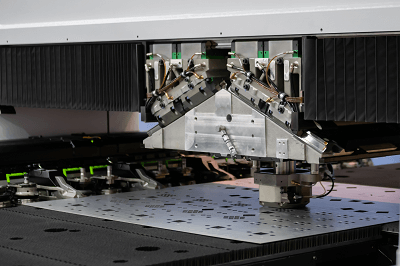What Is a Shearing Service?

Shearing is a metal cutting process utilizing shear force. As a subset of stamping, it shapes or divides metal into parts through operations such as blanking and piercing. Unique among metalworking methods, shearing exclusively focuses on cutting without removing material.
Shearing employs a die to exert shear force on metal, precisely cutting it into the required shape. This process capitalizes on the force between the press and the metal, essential for achieving the desired configuration.
Uses of Shearing Services
Shearing plays a foundational role in metalworking, shaping components like automobile frames through press-applied shear force. It initiates the sheet metal forming process through blanking, setting the stage for further shaping in the production of furniture, building materials, and machinery parts.
Moreover, shearing facilitates the creation of metal enclosures by punching out curved lines in sheet metal, using either pre-existing dies or employing nibbling for more complex shapes.
Principle of Shearing Services
The principle behind shearing involves clamping metal between an upper punch and a lower die to generate shear force, effectively splitting the metal. This process may result in burrs or distortions, underscoring the challenge of producing precise parts without subsequent finishing steps.
Shearing outcomes can include parts with directional burrs, highlighting the importance of deburring for accuracy.
Types of Shearing Services
Shearing encompasses several techniques, with blanking, drilling, and compound processing as prominent examples.
1. Blanking
Blanking shapes metal sheets into pre-press forms, involving shearing, dividing, and punching based on the blank’s characteristics.
2. Drilling
Drilling involves creating holes in metal sheets, producing scrap from the punched areas. It can range from the multiplicity of holes for complex shapes to closely spaced holes achieved through nibbling.
3. Compound Processing
Also known as total punching, compound processing allows for simultaneous cutting and punching, enabling efficient mass production of precise parts, albeit with higher maintenance costs.